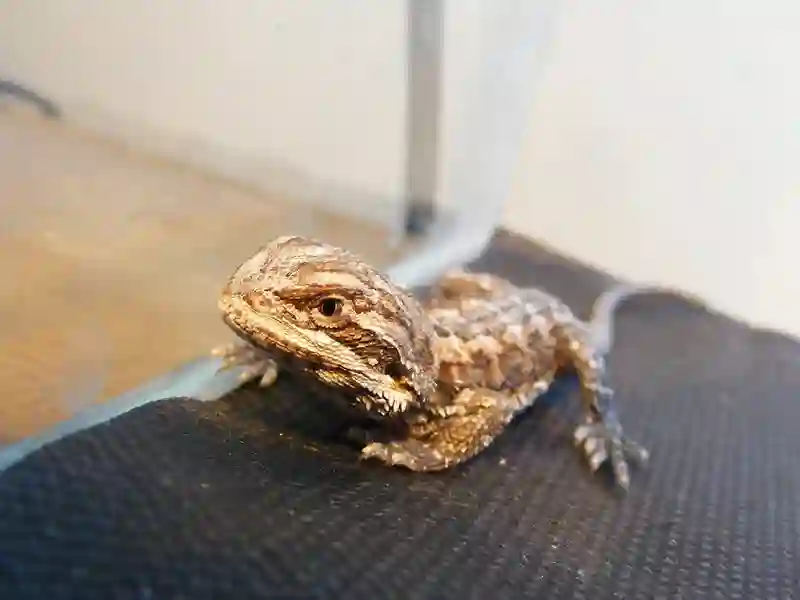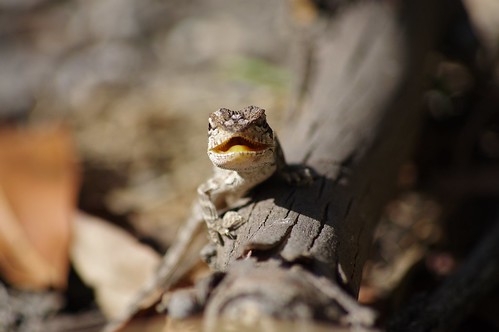Bearded dragons are prone to injuries, especially wounds on their legs. Common causes of wounds on bearded dragons can include trauma from a fall, a bite from another bearded dragon or other reptile, or an infection.
Wounds can range from minor abrasions to deep lacerations that require medical attention. As a reptile health expert, I understand the importance of properly treating these wounds as soon as they are noticed.
If left untreated, they can quickly become infected and cause serious health problems for your bearded dragon. In this article, I will provide detailed instructions on how to properly treat a wound on a bearded dragon’s leg. Keep reading to learn more about the steps necessary to ensure your pet’s health and well-being.
Identifying the Wound
Bearded dragons are hardy reptiles, but they can still suffer from injuries, especially on their legs. In order to identify a wound, it is important to know the different types of wounds that bearded dragons are prone to. These include abrasions, lacerations, and puncture wounds.
Abrasions
Abrasions are superficial wounds that are caused by rubbing or scraping against a rough surface. They can appear as small scrapes or larger areas of missing scales or skin. Bearded dragons may get abrasions from rough handling, climbing on a sharp object, or rubbing against something sharp in their enclosure.
Lacerations
Lacerations are deep cuts that may require stitches to heal properly. They can occur if your bearded dragon falls onto a sharp object in its enclosure or gets its leg caught in something. Lacerations may also happen during fights with other bearded dragons.
Puncture Wounds
Puncture wounds occur when something sharp pierces the skin and goes into the deeper tissues. Bearded dragons may get puncture wounds from bites or scratches from other bearded dragons or animals in their enclosure.
Signs and Symptoms of a Wound on the Leg
If you suspect your bearded dragon has a wound on its leg, there are certain signs and symptoms you should look for. Some common indications of an injury include:
- Limping or favoring one leg over another
- Bruising or swelling around the affected area
- Bleeding (mild to severe)
- Skin damage such as missing scales or cuts
- Discoloration of skin around the wound (redness)
- A visible foreign object lodged in the wound
- Signs of pain or discomfort such as refusing to use the affected leg
It is important to note that not all wounds are visible, especially if they are internal. If your bearded dragon is showing any signs of injury or discomfort, it’s best to have them checked by a veterinarian as soon as possible. Delaying treatment for an injury can lead to more severe complications such as infections or even amputation.
Preparing for Treatment
Necessary Tools and Materials
Before treating your bearded dragon’s wound, it is essential to have all the necessary tools and materials at hand.
This includes:
- Sterile saline solution
- Antiseptic solution or ointment
- Sterile gauze pads or bandages
- Syringe for flushing and cleaning the wound
- Scissors to remove any hair around the wound area
- Soft-bristled brush to clean debris from the skin around the wound
It is also a good idea to have a first aid kit specifically designed for reptiles, which can be easily purchased from pet stores or online.
Creating a Clean and Sterile Environment
Creating a clean and sterile environment is crucial when treating any wound, including those on your bearded dragon. Begin by cleaning the area where you will treat your pet, such as a table or countertop, with soap and water.
Then disinfect it with an antiseptic solution. Ensure that you wash your hands thoroughly with soap and warm water before starting treatment.
Wear disposable gloves if possible to prevent contamination of the wound. Keep all tools and materials close by in case you need them during treatment.
Cover any surfaces that may come into contact with blood or other bodily fluids with disposable paper towels or plastic wrap. By creating a clean and sterile environment, you can help reduce the risk of infection or further injury while treating your beloved bearded dragon’s wound.
Cleaning the Wound
Gently Removing Debris from the Wound
Before cleaning the wound, it is important to remove any debris or foreign material that may be present. This can include dirt, gravel, or any other substance that may have gotten lodged in the wound. To remove debris from the wound, use a pair of clean and sterilized tweezers or forceps.
Gently grasp the foreign material and pull it out in a steady motion. Be sure to avoid pulling on any loose skin or tissue near the wound as this can cause further damage to your pet’s leg.
Using an Antiseptic Solution to Clean the Area
After removing any debris from the wound, it is time to clean it with an antiseptic solution. Begin by preparing a diluted solution of povidone-iodine (Betadine) or chlorhexidine (Nolvasan).
Gently dab the gauze pad onto and around the wound. Use enough pressure to dislodge any remaining debris but not enough force that could cause further injury.
Once you have cleaned around all sides of your bearded dragon’s leg including surrounding areas, dispose of used pads properly. Remember that cleanliness is critical when caring for wounds on pets; therefore wash hands thoroughly after handling your bearded dragon before continuing treatment.
Treating the Wound
Once the wound has been properly cleaned and prepared, it is important to apply a topical antibiotic ointment to prevent infection. This will help to keep bacteria and fungi at bay, allowing the wound to heal quickly and effectively.
There are many different types of antibiotic ointments available on the market, but it is important to choose one that is suitable for use on reptiles. It is best to consult with a veterinarian before selecting an antibiotic ointment.
Applying a Topical Antibiotic Ointment
To apply the ointment, first, gently clean your pet’s leg again with warm water or saline solution. Then take your chosen antibiotic ointment and apply it directly to the wound area.
Be sure to follow any instructions given by your veterinarian or on the product label carefully. Generally, you should apply a thin layer of ointment over the entire wound using a clean cotton swab or gauze pad.
Covering the Wound with a Sterile Dressing or Bandage
After applying the topical antibiotic ointment, you may need to cover the wound with a sterile dressing or bandage depending on its size and severity. The dressing will help protect against further injury as well as keep out bacteria or foreign debris that could cause further irritation or infection.
To dress the wound, place sterile gauze over it and wrap lightly around your pet’s leg using medical tape or vet wrap making sure not too tight so as not to restrict the movement of blood flow.
Monitoring and Follow-up Care
After treating a wound on a bearded dragon’s leg, it is important to regularly monitor the pet for signs of infection or any other complications. This can be done by checking the wound site daily for any changes, such as increased swelling, redness, or discharge. Changes in your pet’s behavior may also indicate that there is an issue with the healing process.
Checking for Signs of Infection or Healing Progress
When checking the wound site, look out for signs such as pus formation, excessive bleeding, unusual odor emanating from the wound area, or if your pet shows signs of pain when you touch that area.
If you notice any of these symptoms, it could indicate an infection. A lack of improvement in the wound over time despite proper care could also be an indication that there are underlying issues that require veterinary attention.
Adjusting Treatment as Necessary
If you notice any adverse changes in your pet’s condition after treating its leg wound successfully, it is essential to adjust its treatment regimen accordingly.
If there seems to be little improvement in healing progress after several weeks have passed since starting treatment initially, you must consider getting a veterinarian involved. The vet will examine your pet and determine whether further action is necessary.
Prevention measures to avoid future injuries
Protective gear for your pet
Providing protective gear for your bearded dragon is an important step in preventing future injuries. Leg injuries are common among bearded dragons, and they can easily be prevented by providing a soft substrate and avoiding sharp or rough surfaces. You can use reptile carpet, paper towels, or newspaper to provide a comfortable surface for your dragon to walk on.
Additionally, you can use leg braces or bandages to provide support if your dragon has a history of leg injuries. These braces will also help prevent any new injuries by protecting the legs from falls and other accidents.
Regular veterinary checkups
Bearded dragons require regular checkups with a veterinarian who specializes in reptiles. These visits will help identify any potential health issues before they become serious problems. A veterinarian can also advise you on how to keep your bearded dragon healthy, including dietary recommendations and care for wounds or other injuries.
During routine checkups, the veterinarian may examine your bearded dragon’s legs to ensure there are no underlying conditions that could lead to future injuries. They may also recommend preventative measures such as supplements or additional equipment if needed.
Conclusion
Treating a wound on a bearded dragon’s leg requires careful attention and proper tools and materials for successful healing without complications such as infections or further injury in the future.
However, implementing preventative measures is equally important – providing protective gear such as soft substrates and leg braces can greatly reduce the risk of injury while regular veterinary checkups can catch any potential health issues before they become serious problems.


